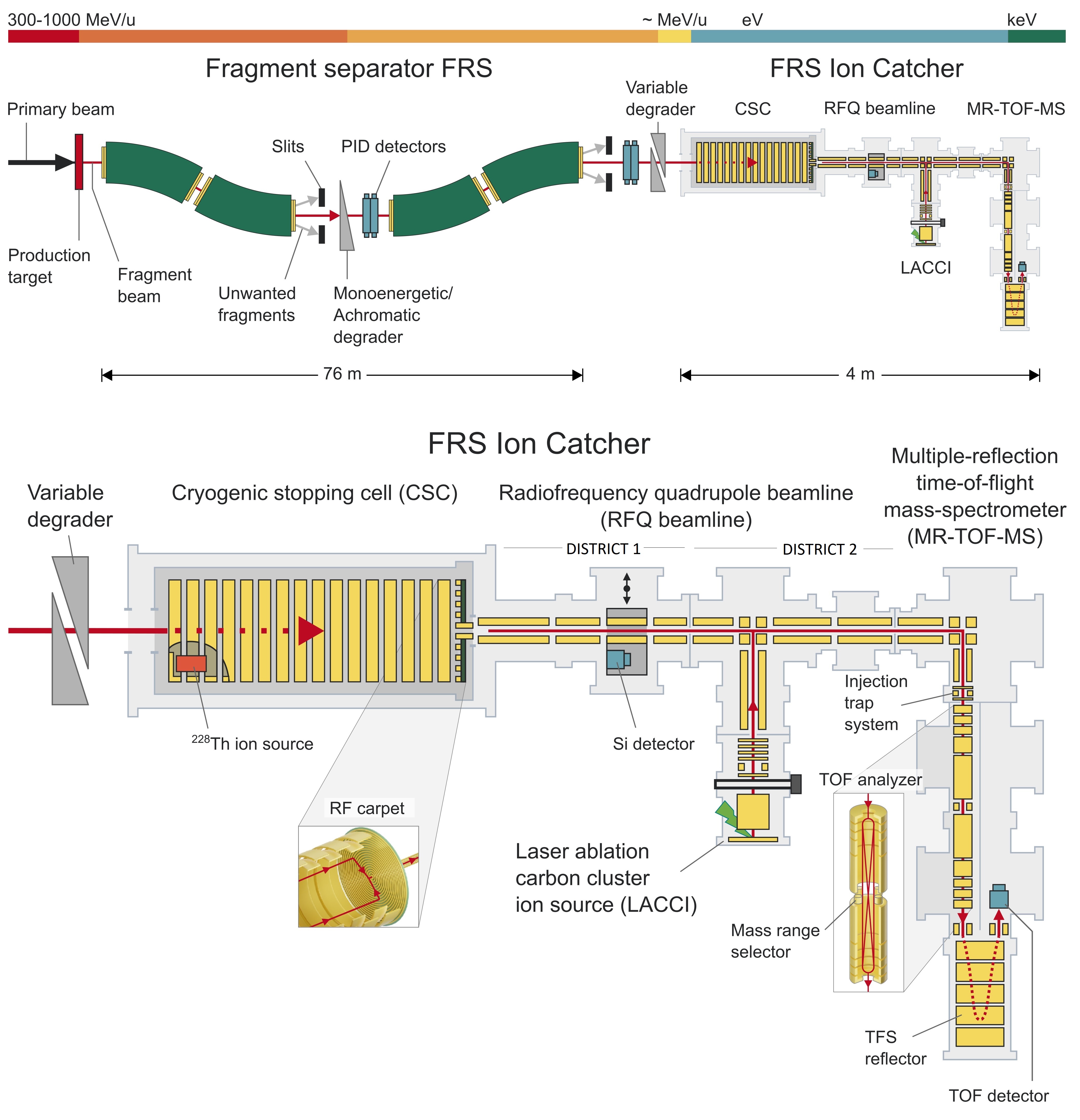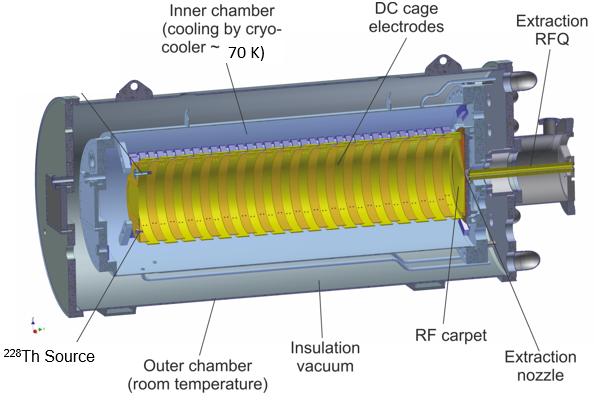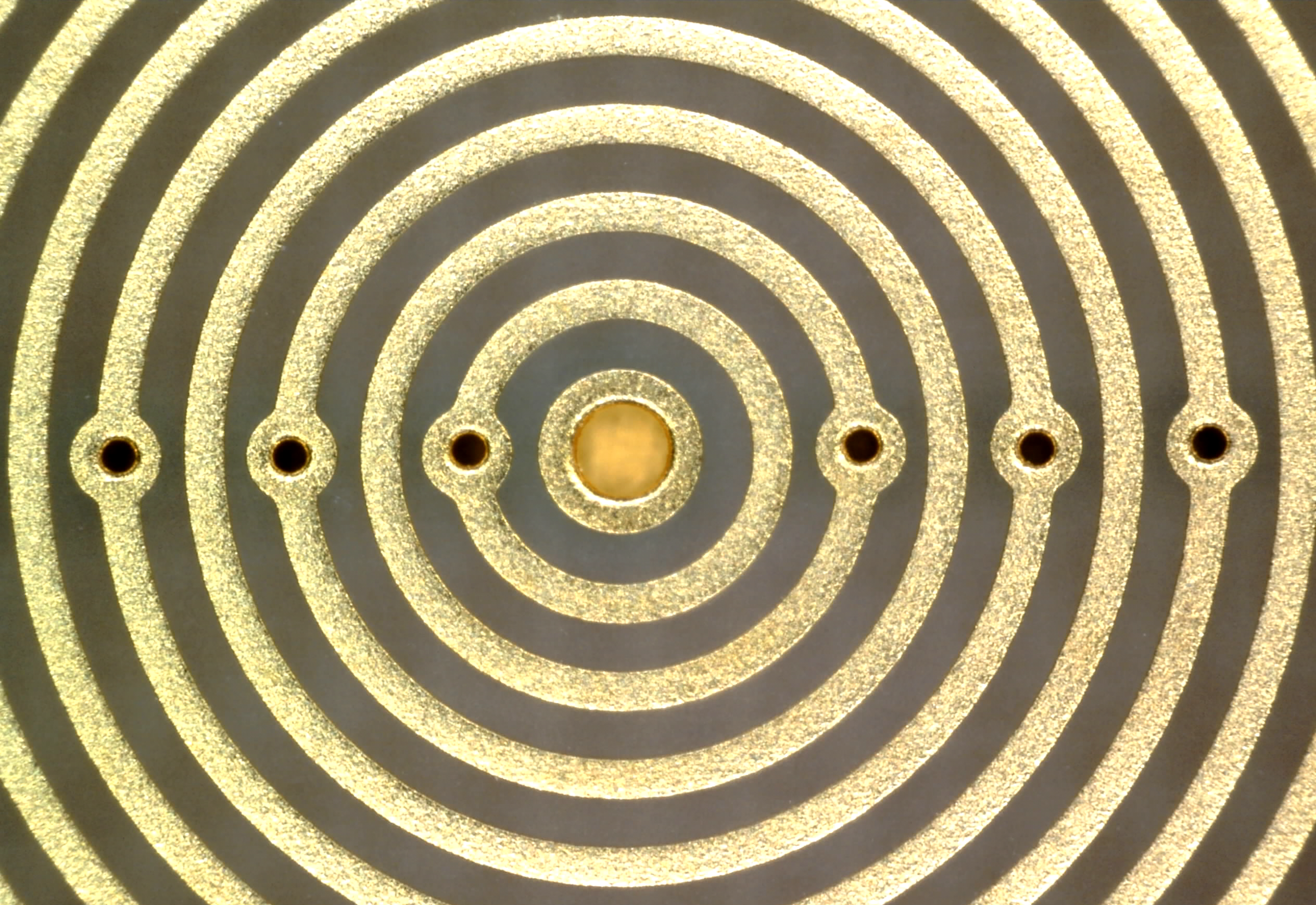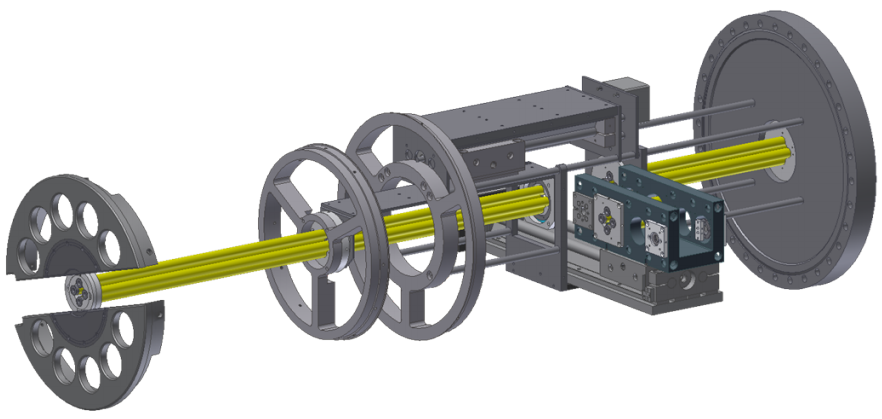At the FRS Ion Catcher precision experiments with thermalized exotic nuclei can be performed. The fragments are produced by projectile fragmentation or fission at relativistic energies, separated in-flight and energy-bunched in the FRS. With the FRS Ion Catcher these fragments are then slowed down and thermalized in a cryogenic stopping cell (CSC). A multiple-reflection time-of-flight mass spectrometer (MR-TOF-MS) is used to perform direct mass measurements and to provide an isobarically clean beam for further experiments, such as mass-selected decay spectroscopy. A versatile RF quadrupole transport and diagnostics unit guides the ions from the CSC to the MR-TOF-MS, provides differential pumping, ion identification and includes reference ion sources.
The FRS Ion Catcher experiment at GSI consists of four main parts, (i) the FRS including a monoenergetic degrader system, (ii) the cryogenic gas filled stopping cell (CSC), (iii) an RF quadrupole-based beam transport (DISTRICT 1 and DISTRICT 2) and (iv) the multiple-reflection time-of-flight mass spectrometer (MR-TOF-MS).
The Fragment Separator (FRS) is a magnetic spectrometer where the exotic nuclei are produced and separated. The energy of the produced exotic nuclei is range bunched in order to maximize the stopping efficiency in the CSC. Here you can find more information about the FRS.
A cross section of the CSC of the FRS Ion Catcher can be seen in the next picture:
It consists in a double chamber construction. The outer chamber is at room temperature and between outer and inner chamber insulation vacuum is formed. The inner chamber at cryogenic temperatures is filled with about 100 mbar of high-purity He gas (6.0). It contains the DC cage, which will generate a electric gradient for pushing the ions towards the extraction side. At the end of the DC cage, a PCB based RF Carpet will transport the ions towards the extraction nozzle. The use of a RF Carpet based in PCB technology allows for high density operation with maximum of stopping efficiency and at the same time provides a monolithic construction easy to handle. The next picture shows a zoom of the RF Carpet Exit hole, where the ring electrodes which transport the ions can also be seen.
The cryogenic operation ensures the cleanliness of the stopping gas by freezing out all the contaminants present in the stopping medium. This increases the ion survival probability and reduces the formation of molecules. Also the requirements of the materials used inside the CSC get more relaxed, being more flexible in the construction. Here some references of this device:
Transport Beamline (DISTRICT 1 and DISTRICT 2):
A compact (~1.5 m length) RFQ-based beamline enables efficient ion transport, identification, mass separation, cooling, bunching, beam mixing and beam splitting and provides calibrants in a wide mass range from a laser ablation carbon cluster ion (LACCI) source. The beamline can easily be divided in two independent vacuum domains by using gate valves and a movable platform where the RFQs are mounted. Moreover, a combination of mass isolation and collision induced dissociation can be employed in order to suppress molecular contamination extracted from the CSC.
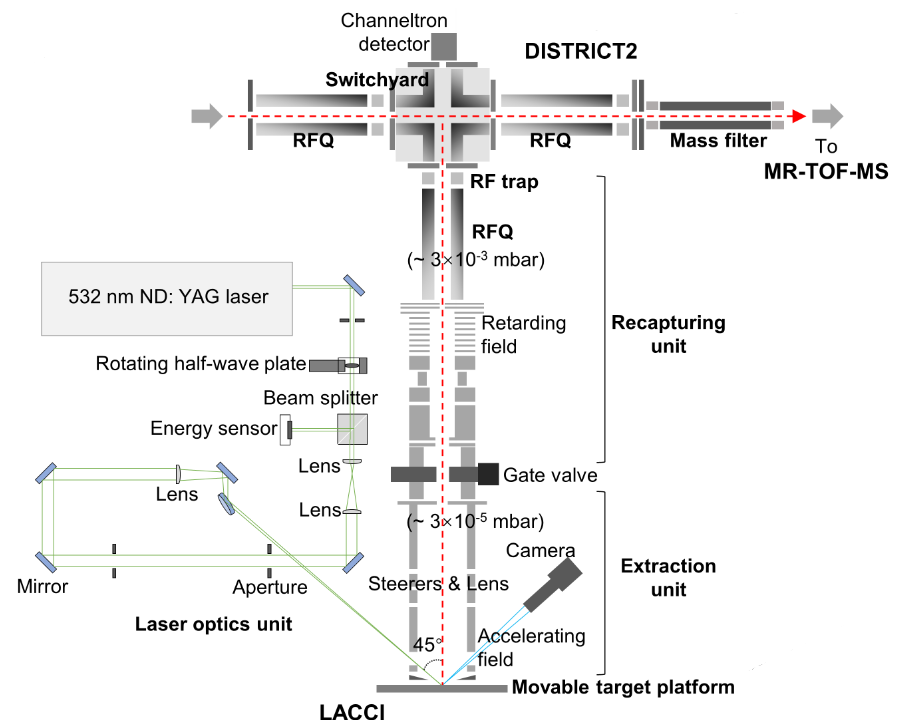
Multiple-Reflection Time-of-Flight Mass Spectrometer (MR-TOF-MS):
TOF-MS is a technique in which the mass-to-charge ratio is obtained by measuring the time-of-flight of charged particles traveling a flight path at a certain kinetic energy. In the multiple-reflection (MR) variant, this flight path is extended by orders of magnitude by reflecting the ions between two electrostatic mirrors to achieve higher mass resolving power and accuracy. MR-TOF-MS are starting to be standard devices in rare isotope beam (RIB) facilities thanks to its proven capabilities for performing high accuracy mass measurements of very exotic nuclei as well as for performing additional tasks such as beam cleaning or beam optimization and characterization. The MR-TOF-MS at the FRS Ion Catcher stands out by the unique combination of high resolving power, measurement time together with a non-scanning nature. Direct mass measurements of several short-lived fragments (e.g. ^{220}Ra with a half-life of 17.8 ms) have been performed with the MR-TOF-MS. In total for more than 40 short-lived nuclei the ground state masses have been determined and 15 isomeric states have been measured. A data evaluation procedure for MR-TOF-MS data has been developed that allows achieving high accuracies even for few counts and overlapping peaks. As a part of this work a new mathematical function has been developed to describe the peak shapes in MR-TOF-MS spectra. An extensive study for the uncertainty sources of the measurement with the MR-TOF-MS has been made. Mass accuracies down to { 6\cdot 10 }^{ -8 } have been achieved. Furthermore, the FRS Ion Catcher is the ideal device to search for long lived isomers (> 10 ms), because it is universal, i.e. element and decay mode independent, faster than other mass spectrometry techniques (e.g. SMS, TOF-ICR), very sensitive (non-scanning), has high mass resolving power (>> { 10 }^{ 5 } ), high dynamic range (> 10:1) and is broadband in nature, i.e. can measure all isobars and isomers of several mass units in parallel. Moreover, the isomers can be spatially separated from the ground state and an isomerically clean beam can be tailored to be provided to other experiments, such as decay spectroscopy.

Here you can find some useful references:
